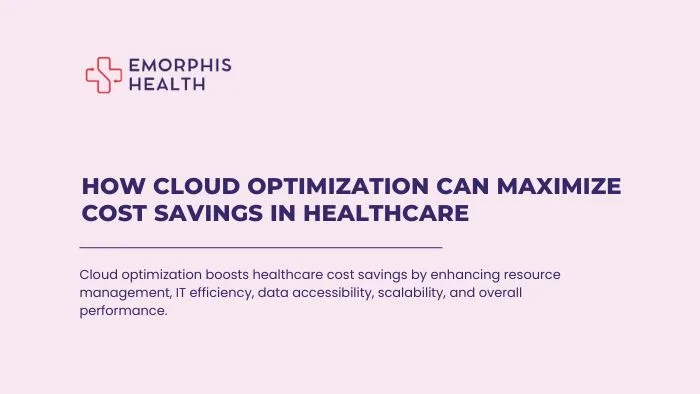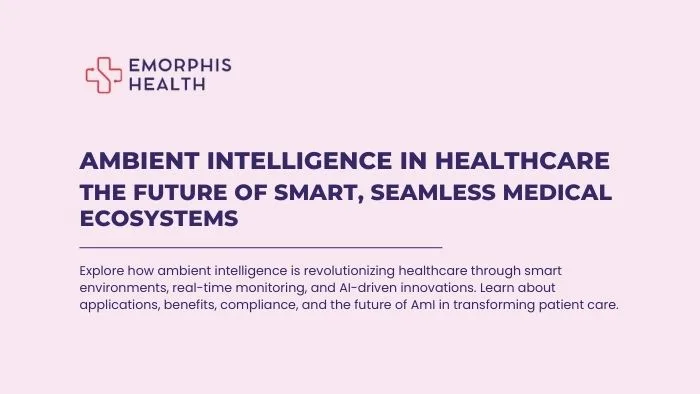Overview
See Contents
- 1 Overview
- 2 1. Reducing Infrastructure Costs with Cloud Optimization
- 3 2. Improving Resource Utilization through Cloud Optimization
- 4 3. Streamlining IT Operations with Cloud Optimization
- 5 4. Improved Data Management and Accessibility through Cloud Optimization
- 6 5. Scalability to Meet Demand with Cloud Optimization
- 7 6. Improved Disaster Recovery and Reduced Downtime
- 8 7. Energy Efficiency and Sustainability through Cloud Optimization
- 9 8. Enhancing Collaboration and Communication with Cloud Optimization
- 10 9. Automating Administrative Tasks with Cloud Optimization
- 11 10. Optimizing Patient Flow and Resource Allocation with Cloud-Based Analytics
- 12 Conclusion
In today’s fast-evolving healthcare landscape, managing costs while maintaining high-quality care is a constant challenge. One effective solution that many healthcare organizations are turning to is cloud optimization. By strategically leveraging cloud technologies, healthcare providers can streamline operations, reduce infrastructure costs, and improve the overall efficiency of their IT systems.
In this article, we will explore how cloud optimization can maximize cost savings in healthcare by focusing on resource management, IT operations, data accessibility, scalability, and more.
Let’s look at them in detail, one by one.
1. Reducing Infrastructure Costs with Cloud Optimization
Traditional healthcare IT infrastructures often require significant capital expenditure. Hospitals and clinics need to purchase expensive servers, storage devices, and other hardware, alongside the costs for their installation, maintenance, and upgrades. With cloud optimization, however, healthcare providers can shift these heavy costs to a more flexible, pay-as-you-go model.
Instead of investing heavily in on-premise data centers, healthcare organizations can take advantage of cloud service providers that offer scalable solutions. This means they only pay for the resources they actually use, helping them avoid the financial burden of over-provisioning. Moreover, cloud optimization allows for the consolidation of hardware and the reduction of physical storage needs, leading to lower maintenance and energy costs. This transition to a more efficient, cloud-based infrastructure can result in significant long-term savings.
2. Improving Resource Utilization through Cloud Optimization
One of the key benefits of cloud optimization is the ability to improve resource utilization. Healthcare organizations can monitor their cloud usage in real time and adjust resources based on demand. For example, during low-traffic periods, cloud resources such as storage, processing power, and bandwidth can be scaled down, which results in reduced costs.
On the flip side, when there is a surge in demand (such as during a public health crisis or flu season), healthcare organizations can easily scale up their cloud resources without having to make any physical upgrades. This dynamic management of resources allows healthcare providers to ensure that they are always operating at optimal efficiency, eliminating waste and improving cost-effectiveness.

3. Streamlining IT Operations with Cloud Optimization
According to a report by Grand View Research healthcare cloud computing market is going to increase to USD 45.1 billion in 2030. Cloud optimization also plays a vital role in simplifying IT operations. Healthcare providers often face the challenge of managing complex IT infrastructures that require regular updates, troubleshooting, and manual interventions. By moving to the cloud, much of this burden is lifted.
Cloud service providers typically offer automated tools for system monitoring, patch management, and backups. These tools ensure that IT staff can focus on strategic initiatives rather than on routine maintenance. Furthermore, automated updates and security patches reduce the risk of downtime and system failures, saving both time and money. Cloud optimization helps healthcare organizations streamline their IT operations, which directly contributes to cost savings by reducing labor expenses and minimizing the risk of operational disruptions.
Do follow the link to check the details of the difference between on-premise and cloud-based healthcare solutions – Cloud-Based Healthcare Solutions vs. On-Premise Healthcare Systems.
4. Improved Data Management and Accessibility through Cloud Optimization
In healthcare, data is the backbone of operations. Effective management and access to patient data can directly impact the quality of care and the efficiency of healthcare delivery. Cloud optimization helps healthcare providers store, manage, and access patient data more efficiently. With optimized cloud storage solutions, healthcare organizations can ensure they only pay for the data storage they actually need, eliminating unnecessary expenses associated with underutilized or redundant storage.
Cloud optimization also allows seamless access to patient records across multiple departments and facilities. Healthcare professionals can instantly retrieve updated data, which improves decision-making and the speed of care delivery. By reducing the time spent searching for and managing data, healthcare organizations save both operational costs and time, ultimately leading to improved patient outcomes.

5. Scalability to Meet Demand with Cloud Optimization
Today as per Research and Market report the global healthcare cloud computing market is forecasted to grow at a CAGR of 28.5% to reach USD 52.3 Billion in 2026. One of the greatest advantages of cloud optimization is its scalability. Healthcare organizations often face fluctuating demands, whether due to seasonal illness spikes, special events, or unexpected surges in patient volume. Traditional IT infrastructures can be slow and costly to expand, which can lead to inefficiencies and higher operational costs during peak periods.
Cloud optimization removes these barriers by enabling healthcare providers to scale their resources up or down with ease. During periods of high demand, cloud resources can be quickly expanded, ensuring that there is no disruption to services. Similarly, when demand drops, resources can be scaled back to reduce costs. This scalability ensures that healthcare organizations only pay for what they need, avoiding the excess costs associated with maintaining a fixed IT infrastructure.
6. Improved Disaster Recovery and Reduced Downtime
In healthcare, the cost of downtime can be enormous, both in terms of financial loss and patient outcomes. System failures, data breaches, or natural disasters can disrupt operations, leading to lost productivity and patient dissatisfaction. Cloud-based solutions, when properly optimized, offer robust disaster recovery mechanisms.
With cloud optimization, healthcare organizations can ensure that their data is regularly backed up and easily recoverable in the event of a system failure. Cloud providers typically store data in multiple locations, ensuring redundancy and minimizing the risk of data loss. In the event of downtime, cloud optimization tools can also help reduce recovery times, which helps avoid the high costs associated with prolonged service disruptions. This comprehensive disaster recovery plan is a critical component of cloud optimization and contributes significantly to long-term cost savings.

7. Energy Efficiency and Sustainability through Cloud Optimization
According to a report by GMI, The Healthcare Cloud Computing Market, valued at USD 54 billion, is projected to expand at a 16.1% CAGR from 2024 to 2032. This growth is driven by advancements in technology and the increasing adoption of cloud-based healthcare IT solutions. Key factors fueling this trend include enhanced IT infrastructure, supportive government initiatives, and growing demand for remote patient monitoring services. Today, healthcare organizations are increasingly focusing on sustainability and energy efficiency to reduce their environmental footprint. Cloud optimization contributes to these efforts by offering energy-efficient alternatives to on-premise data centers.
In an insight by Oracle discussing the benefits of cloud computing, they state that switching to cloud-based services can help businesses cut energy use and lower their carbon footprint by up to 90%. Instead of maintaining on-site servers and software, companies can rely on cloud solutions to access applications and data from any internet-connected device. Cloud providers often operate large-scale, energy-efficient data centers that use advanced cooling systems, renewable energy sources, and other green technologies to minimize energy consumption. By shifting operations to the cloud, healthcare providers can reduce their overall energy use, leading to cost savings on utilities and supporting their sustainability initiatives. Additionally, optimized cloud usage ensures that only the necessary resources are used, further contributing to energy savings.
Further, click the link to check in detail how to leverage cloud solutions in healthcare for streamlined patient care.
8. Enhancing Collaboration and Communication with Cloud Optimization
Effective communication and collaboration are critical in healthcare settings, where timely and accurate sharing of information can directly impact patient care. Cloud optimization helps improve collaboration across different departments, facilities, and even between healthcare professionals and patients. With optimized cloud solutions, teams can access and share real-time data from anywhere, whether they are in the hospital, at a remote location, or on the go.
By reducing the need for physical meetings and paperwork, cloud optimization minimizes administrative overhead and saves on travel and communication costs. Additionally, cloud-based collaboration tools allow healthcare professionals to instantly update patient records, consult with colleagues, and make quicker decisions, which can lead to better patient outcomes and more efficient use of resources. This improved collaboration directly reduces costs associated with miscommunication and delayed care.
9. Automating Administrative Tasks with Cloud Optimization
Administrative tasks in healthcare, such as billing, scheduling, and patient management, can be time-consuming and resource-draining. With cloud optimization, many of these processes can be automated, reducing the need for manual interventions and lowering administrative costs.
For example, patient appointment scheduling, follow-ups, and payment processing can be handled through cloud-based systems that automatically send reminders, handle payments, and update schedules in real-time. This not only reduces the burden on staff but also minimizes the risk of human error, which can result in costly mistakes or inefficiencies. By automating routine administrative tasks, healthcare organizations can allocate resources more effectively and focus on delivering quality care to patients.
Follow the link to check in detail on cloud computing services.
10. Optimizing Patient Flow and Resource Allocation with Cloud-Based Analytics
Cloud-based analytics tools, when optimized, allow healthcare providers to gain valuable insights into patient flow, resource utilization, and overall operational efficiency. By analyzing trends in patient volume, wait times, and resource usage, healthcare organizations can make data-driven decisions to optimize staffing, treatment schedules, and the allocation of medical resources.
Cloud optimization helps healthcare providers use this data in real-time to adjust operations dynamically. For example, if an analysis reveals that certain departments are overburdened, cloud optimization tools can automatically suggest adjustments to staffing or resource allocation to alleviate pressure. By improving patient flow and resource allocation, healthcare providers can reduce bottlenecks, prevent overstaffing, and avoid underutilization of resources, all of which lead to cost savings. Additionally, data-driven decisions can improve patient care, reducing unnecessary tests or treatments and optimizing treatment plans to ensure cost-effective healthcare delivery.
Conclusion
Cloud optimization offers numerous ways to maximize cost savings for healthcare organizations. By reducing infrastructure costs, improving resource utilization, and streamlining IT operations, healthcare providers can significantly cut down on operational expenses. The ability to scale resources dynamically, improve data management, and enhance disaster recovery systems further contributes to a more cost-effective and efficient healthcare environment.
In summary, let’s take a look at a graphic that sums up how cloud optimization can boost healthcare cost savings.

Ultimately, cloud optimization empowers healthcare organizations to focus on what truly matters—providing high-quality care to patients—while reducing unnecessary costs. As the healthcare industry continues to embrace cloud technologies, cloud optimization will remain a key strategy for driving operational efficiency and maximizing cost savings.






